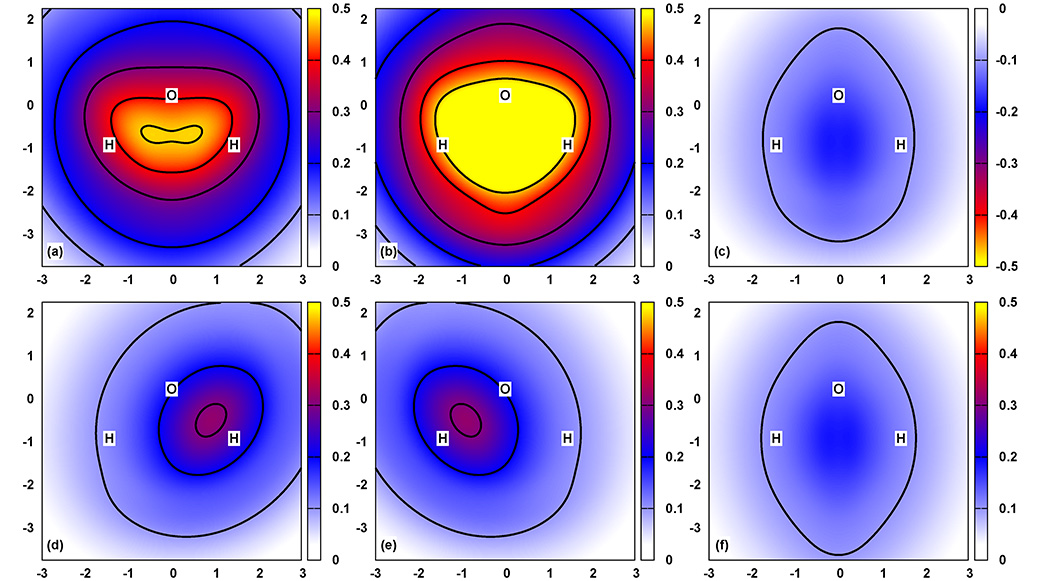Fig. 3.
Decomposition of water’s PBE first-order potential . The nonadditive potential is depicted in (a), which is the sum of the two- and three-body corrections shown in (b) and (c), respectively. The two-body correction [(b)] is the sum of individual pair-corrections depicted in (d), (e), and (f). The colors represent the value of the potential along the plane formed by the atoms. The x- and y-axis are expressed in Bohr and the color scale is in Eh. Note that potential in (c) is negative, whereas all other potentials are positive. The color scheme emphasizes that the magnitude of the three-body correction is so similar to the H-H pair-correction, that these potentials cancel. As a result, the nonadditivity shown in (a) is well-reproduced by the sum of (d) and (e). The solid lines are isocontour values of 0.1, 0.2, 0.3, 0.4, and 0.47 Eh

